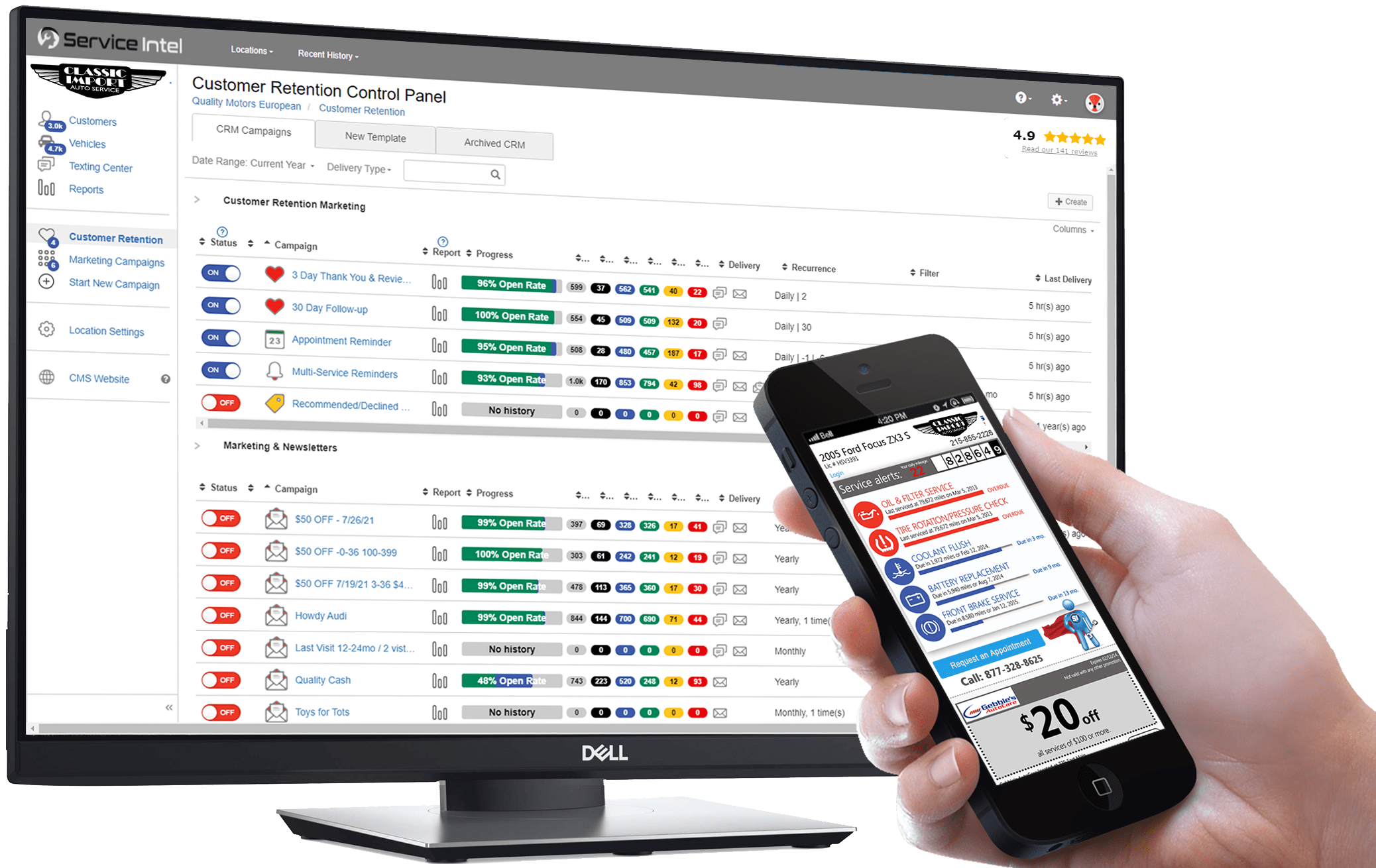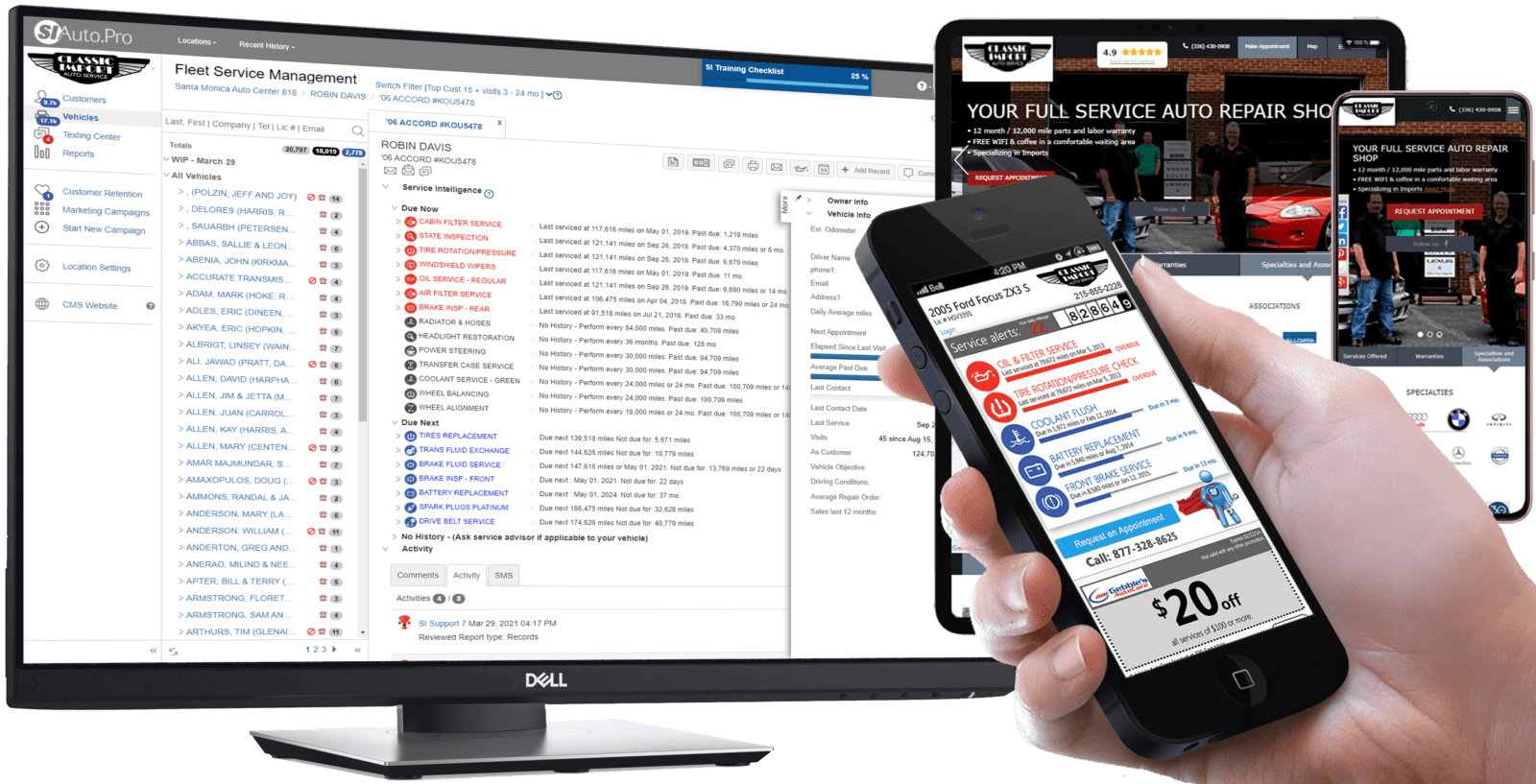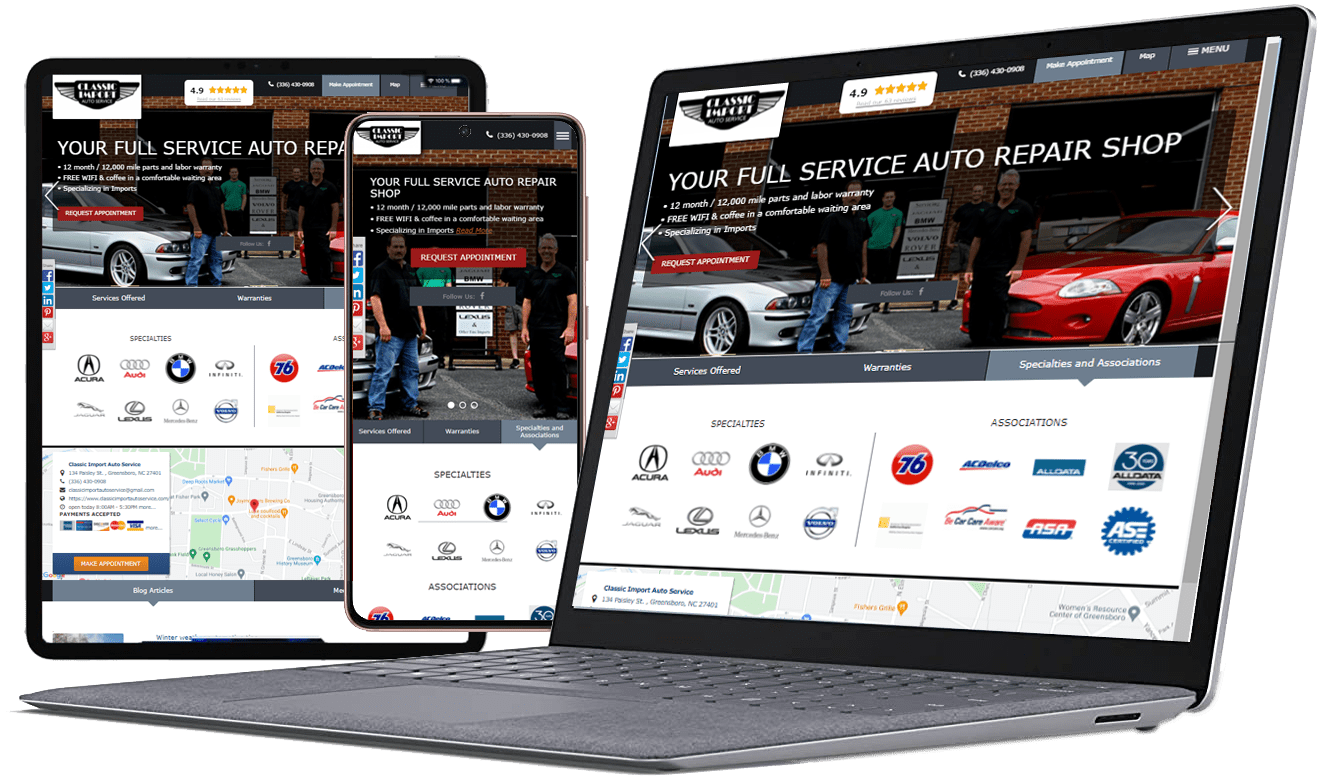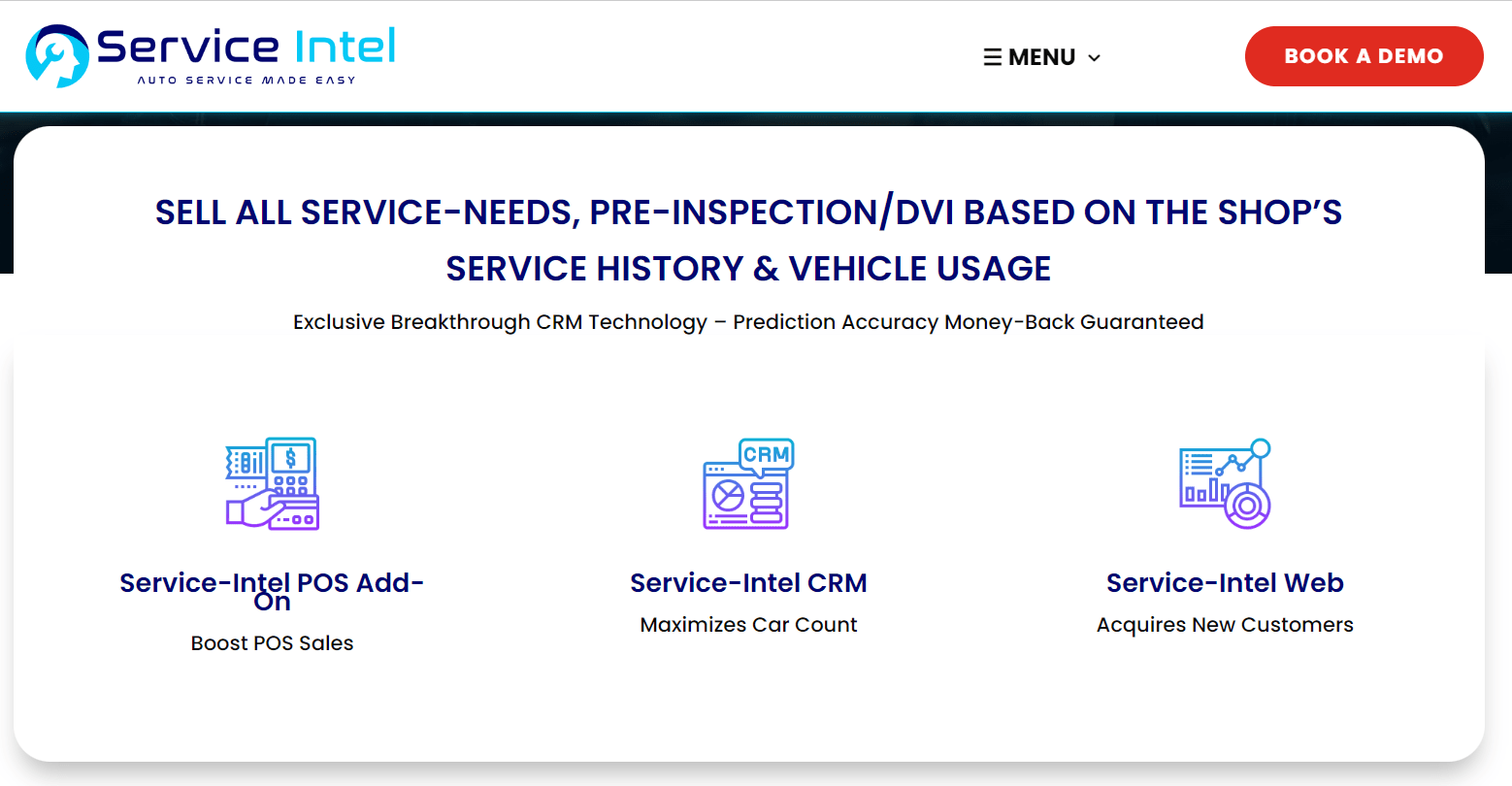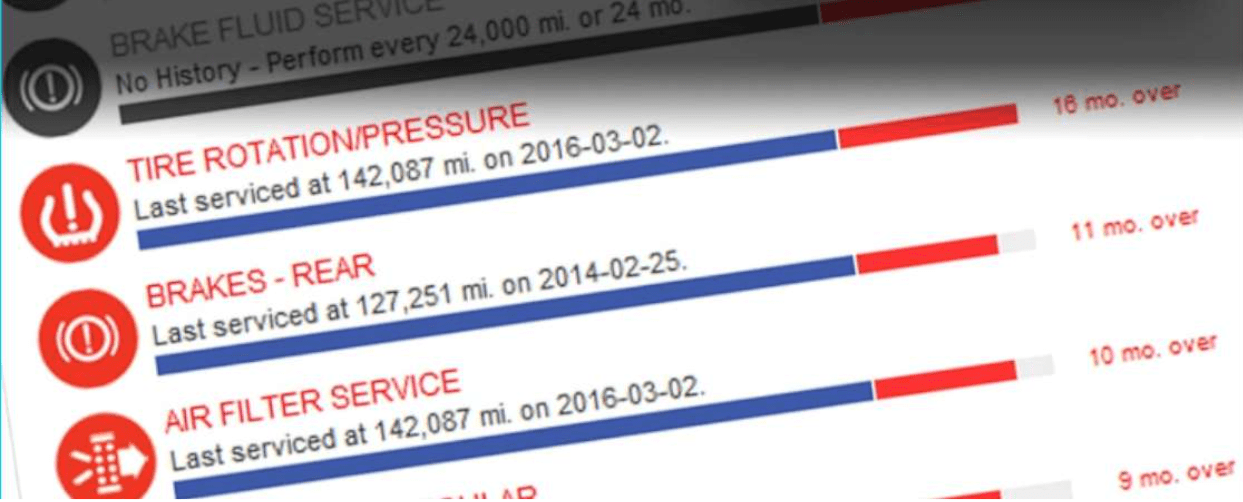Client
eAutoClub, Inc, the USA company that drives digital services for the vehicle industry
End Users
Vehicle owners, Parts shops, Service Stations
Project overview
Our client launched an app for vehicle maintenance to facilitate mutual trust between all market players. Aftermarket vehicle maintenance in the USA is challenging customers and service companies. Vehicle owners believe that regular notifications about service checks work primarily for parts suppliers and service providers. On the other hand, under-performed maintenance costs for the automotive industry in the US are approximately $60 billion per year. Such a colossal loss for untrust reasons!
Is there a possible win-win solution that revives the trust? “Yes,” – said Jorge H. Antico, founder of eAutoClub, Inc., and launched Service Intelligent – a powerful data-mining tool that automatically finds any service an automobile needs. The main feature of the solution is a smart and flexible approach to any individual need of vehicle owners. The key idea of the application is that the service writing process lacks an analysis of previously installed parts and fluids to determine recurring service needs objectively.
This application examines how a vehicle is being used and determines its actual service needs based on its condition rather than relying on formal metrics or assumptions made by managers. This benefits vehicle owners and service providers, such as parts, lubricant distributors, and service stations. Since launching this solution, vehicle owners have become more approving of service or part substitutions because they receive trustworthy justifications. This, in turn, benefits repair shops and service providers.
Challenge
To maintain a competitive edge within the market, it is imperative to thoroughly refine the core components of the application and seamlessly integrate with a wide range of customer relationship management (CRM) and platform services utilized by service providers.
It is common practice for parts shops and service stations to rely upon widely recognized CRM and warehouse management systems (WMS), which is why the Service Intelligence application must be equipped with the necessary connectors to facilitate the exchange of information with these platforms. The main challenge was safely connecting Service Intelligence via APIs to the databases of clients’ platforms and ensuring the correct synchronization.
When our team started working with the Service Intelligence, there was only a desktop application. Working on remote client machines required a significant amount of support. The client wanted to change that and migrate from a desktop to a cloud web application with a “thin client” responsible for connecting to the shop’s CRM systems.
As an outcome of the system modernization and launching of the app for vehicle maintenance, stakeholders were expected to deploy the condition-based platform that tracks the entire life-cycle of every part, lubricant, and fluid. Set-up is a breeze and populates from Point-of-Sale service history.
- Extensive reports with information about what is due, not due, or never done for the vehicle
- Condition-based marketing. SI ages the service history based on vehicle-specific daily usage for fair and trustworthy service recommendations.
- Contact automation. Ability to send reports with vehicle state to vehicle owners
- Ability to send thank you’s, declined work, appointments & service reminders, newsletters, review requests & promos. Adding custom logo, branding, custom messages, and pictures
- Promoting a service only to vehicles that need it, the ability to pick a theme, and customize a message.
Solution
Deep integration of the Service Intelligence platform with third-party services and platforms
To ensure smooth data exchange, our engineers developed the integration layer (middleware) that bridges the application and the third-party services/platforms.
Our team designed a completely new SaaS architecture for Service Intelligence and developed a scalable multitenant web application.
Migration from a desktop to a cloud web application with a "thin client" responsible for connecting to the shop’s CRM systems.
Artelogic engineers have taken responsibility for the deep integration of the Service Intelligence platform with third-party services and platforms. We conducted a thorough needs assessment to determine the specific requirements and objectives of the integration. Our experts determined what data and functionalities need to be shared between the Service Intelligence and services/platforms that clients use. Identifying the Application Programming Interfaces (APIs) or integration tools provided by the third-party services/platforms allowed engineers to outline the proper architecture of the solution. That, in turn, ensured that the application could send and receive data in the required formats.
We developed an integration plan outlining data flow and points to be synchronized, and experts set rules for data validation, transformation, and synchronization.
To ensure smooth data exchange, our engineers developed the integration layer (middleware) that bridges the application and the third-party services/platforms. These connectors are responsible for handling data transformation and communication.
Our team designed a completely new SaaS architecture for Service Intelligence and developed a scalable multitenant web application. In parallel, we developed a “thin client” that allowed smooth data synchronization between the client data (located on the client’s machines) and the web application.
Results
The client got a modernized platform that met all stakeholders’ requirements. Launching the app for vehicle maintenance enabled a significant decrease in onboarding new clients and client support time.
- Developed a scalable multitenant application;
- Extended the application’s functionality;
- Designed new SaaS architecture;
- Developed the “thin client” for data synchronization.
